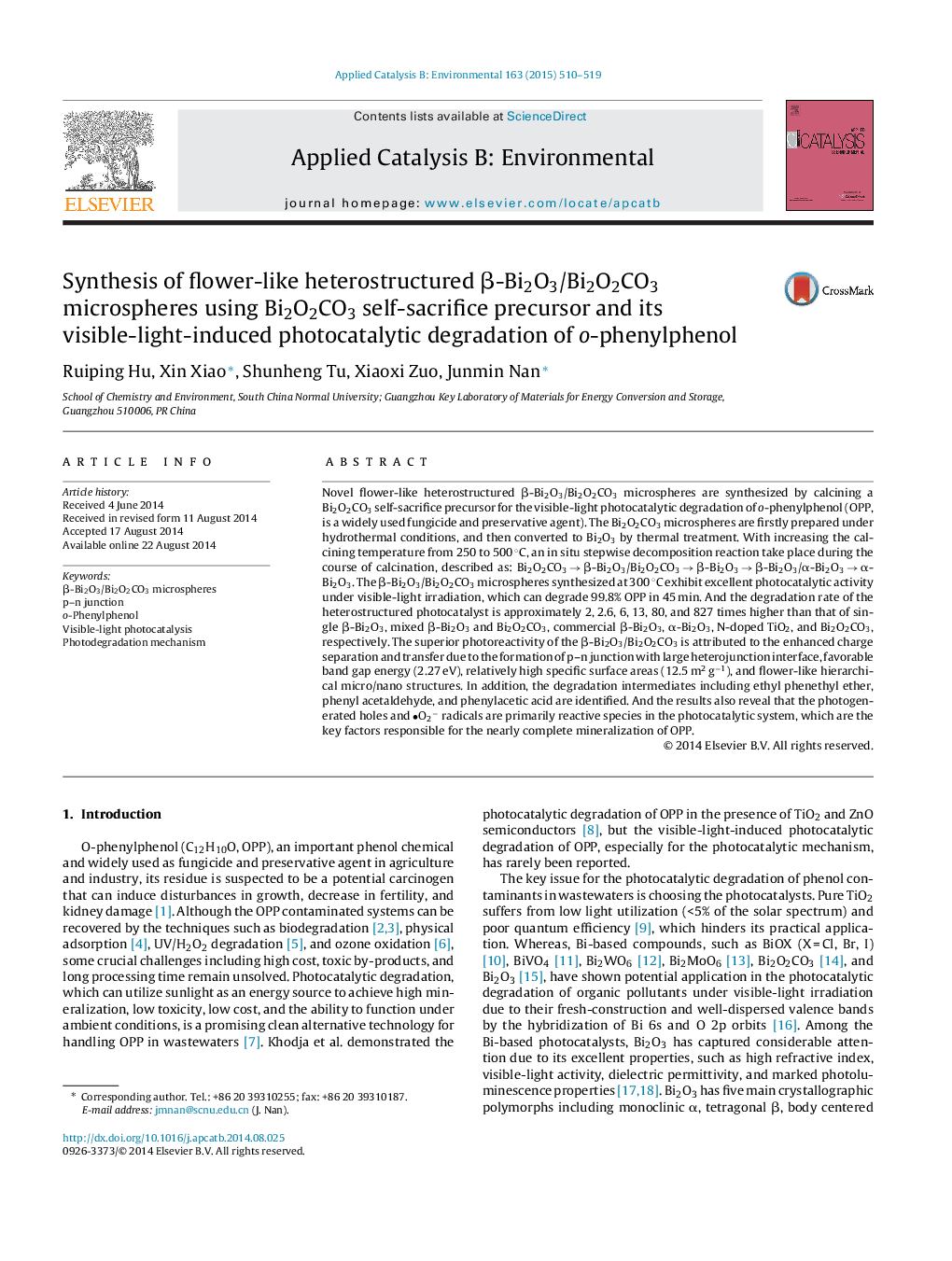| Article ID | Journal | Published Year | Pages | File Type |
|---|---|---|---|---|
| 44904 | Applied Catalysis B: Environmental | 2015 | 10 Pages |
•Novel flower-like β-Bi2O3/Bi2O2CO3 microspheres are synthesized by in situ calcining Bi2O2CO3 precursor.•The β-Bi2O3/Bi2O2CO3 composite exhibits enhanced photocatalytic activity to the degradation of o-phenylphenol.•The enhanced photocatalytic activity is ascribed to the formation of p-n junction between β-Bi2O3 and Bi2O2CO3.•h+ and •O2− are demonstrated as main reactive species in the photocatalytic process.
Novel flower-like heterostructured β-Bi2O3/Bi2O2CO3 microspheres are synthesized by calcining a Bi2O2CO3 self-sacrifice precursor for the visible-light photocatalytic degradation of o-phenylphenol (OPP, is a widely used fungicide and preservative agent). The Bi2O2CO3 microspheres are firstly prepared under hydrothermal conditions, and then converted to Bi2O3 by thermal treatment. With increasing the calcining temperature from 250 to 500 °C, an in situ stepwise decomposition reaction take place during the course of calcination, described as: Bi2O2CO3 → β-Bi2O3/Bi2O2CO3 → β-Bi2O3 → β-Bi2O3/α-Bi2O3 → α-Bi2O3. The β-Bi2O3/Bi2O2CO3 microspheres synthesized at 300 °C exhibit excellent photocatalytic activity under visible-light irradiation, which can degrade 99.8% OPP in 45 min. And the degradation rate of the heterostructured photocatalyst is approximately 2, 2.6, 6, 13, 80, and 827 times higher than that of single β-Bi2O3, mixed β-Bi2O3 and Bi2O2CO3, commercial β-Bi2O3, α-Bi2O3, N-doped TiO2, and Bi2O2CO3, respectively. The superior photoreactivity of the β-Bi2O3/Bi2O2CO3 is attributed to the enhanced charge separation and transfer due to the formation of p–n junction with large heterojunction interface, favorable band gap energy (2.27 eV), relatively high specific surface areas (12.5 m2 g−1), and flower-like hierarchical micro/nano structures. In addition, the degradation intermediates including ethyl phenethyl ether, phenyl acetaldehyde, and phenylacetic acid are identified. And the results also reveal that the photogenerated holes and •O2− radicals are primarily reactive species in the photocatalytic system, which are the key factors responsible for the nearly complete mineralization of OPP.
Graphical abstractFigure optionsDownload full-size imageDownload as PowerPoint slide
